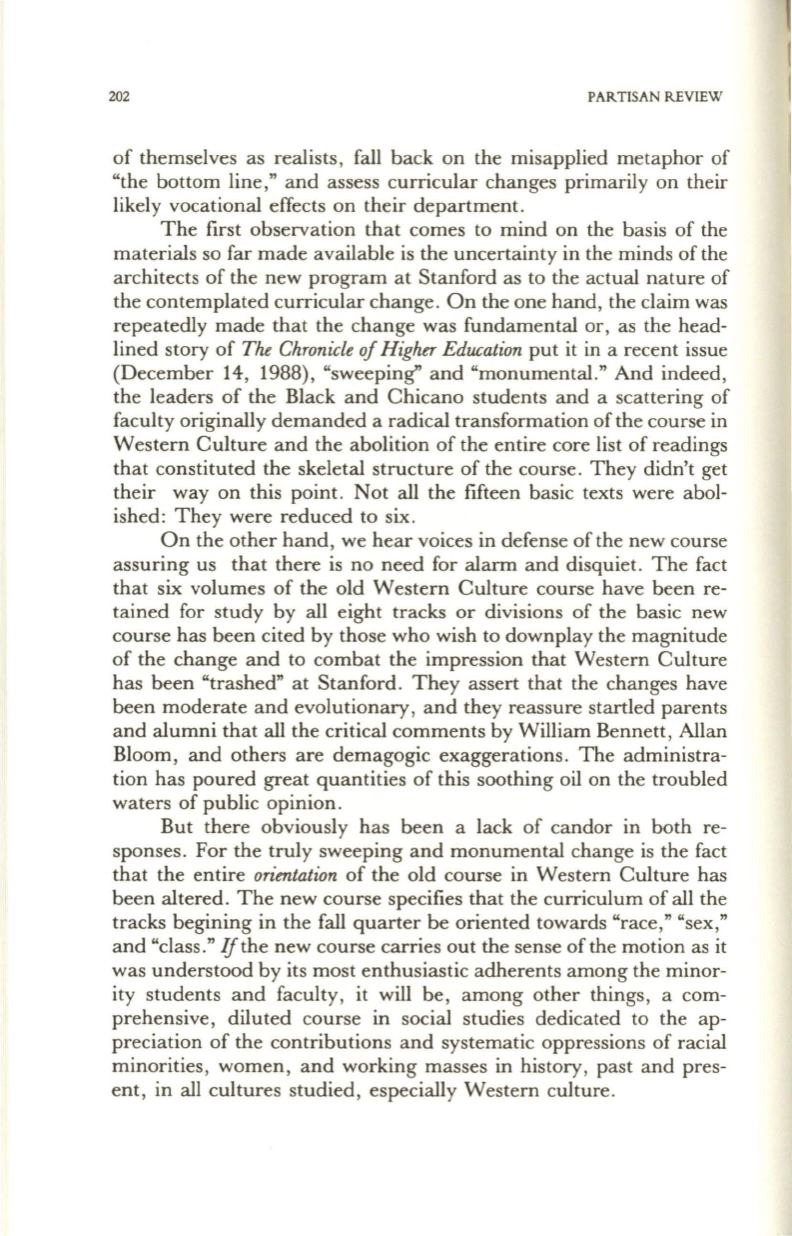
202
PARTISAN REVIEW
of themselves as realists , fall back on the misapplied metaphor of
"the bottom line," and assess curricular changes primarily on their
likely vocational effects on their department.
The first observation that comes to mind on the basis of the
materials so far made available is the uncertainty in the minds of the
architects of the new program at Stanford as to the actual nature of
the contemplated curricular change . On the one hand , the claim was
repeatedly made that the change was fundamental or, as the head–
lined story of
The Chronicle of Higher Education
put it in a recent issue
(December 14, 1988), "sweeping" and "monumental." And indeed,
the leaders of the Black and Chicano students and a scattering of
faculty originally demanded a radical transformation of the course in
Western Culture and the abolition of the entire core list of readings
that constituted the skeletal structure of the course . They didn't get
their way on this point. Not all the fifteen basic texts were abol–
ished: They were reduced to six .
On the other hand , we hear voices in defense of the new course
assuring us that there is no need for alarm and disquiet. The fact
that six volumes of the old Western Culture course have been re–
tained for study by all eight tracks or divisions of the basic new
course has been cited by those who wish to downplay the magnitude
of the change and to combat the impression that Western Culture
has been "trashed" at Stanford. They assert that the changes have
been moderate and evolutionary, and they reassure startled parents
and alumni that all the critical comments by William Bennett , Allan
Bloom, and others are demagogic exaggerations. The administra–
tion has poured great quantities of this soothing oil on the troubled
waters of public opinion .
But there obviously has been a lack of candor in both re–
sponses . For the truly sweeping and monumental change is the fact
that the entire
orientation
of the old course in Western Culture has
been altered . The new course specifies that the curriculum of all the
tracks begining in the fall quarter be oriented towards "race," "sex,"
and "class."
If
the new course carries out the sense of the motion as it
was understood by its most enthusiastic adherents among the minor–
ity students and faculty , it will be , among other things , a com–
prehensive, diluted course in social studies dedicated to the ap–
preciation of the contributions and systematic oppressions of racial
minorities, women , and working masses in history, past and pres–
ent, in all cultures studied , especially Western culture.


